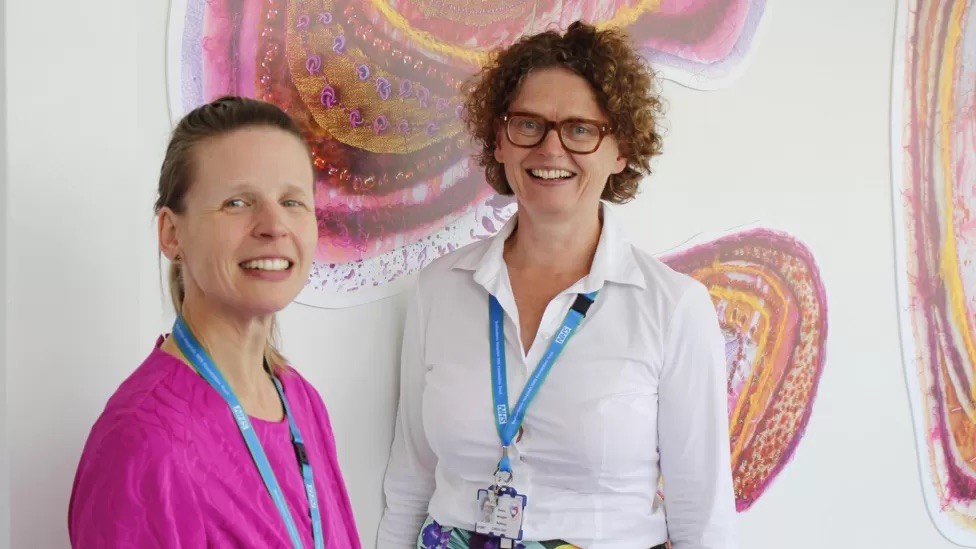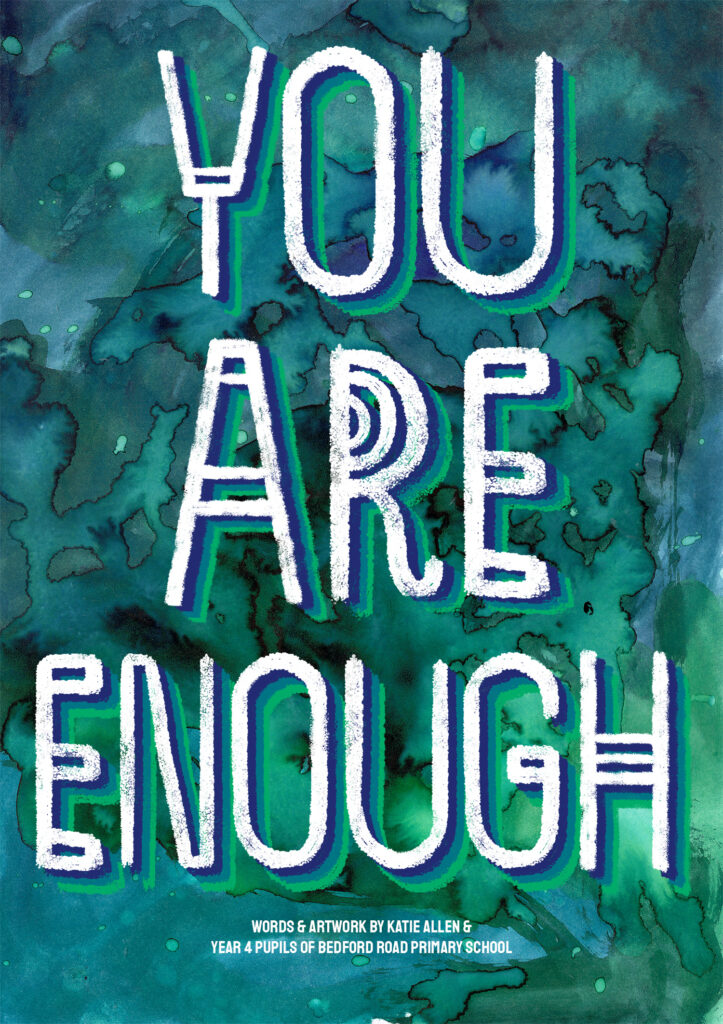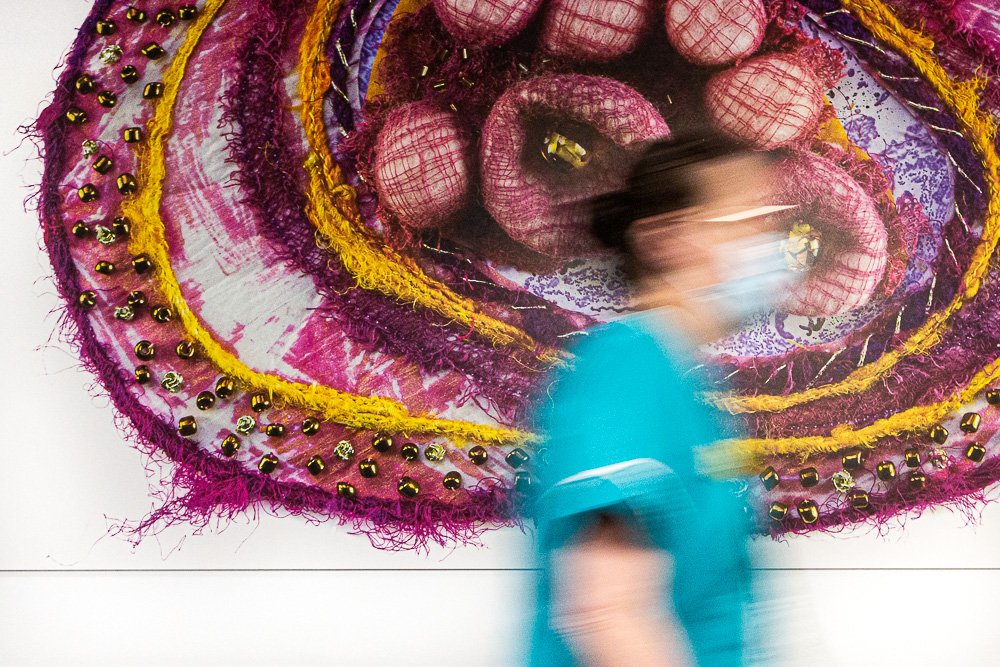Working as a staff health and wellbeing psychologist offers a range of opportunities to be creative. As an evolving area of intervention it invites innovation, and permission to try new things.
One of the initiatives I am most proud of is the development and delivery of an art and wellbeing collaboration called Take heART. A project that seeks to improve the experience of staff, patients and hospital visitors through creativity and the arts. But how, as a psychologist did I find myself involved in this work? Let me share a story with you.

© Shaun Armstrong
My story
For a long time I believed “I’m not creative”. This was the story I told myself….and others. Stories that started when I was a child: attempts to learn a musical instrument, dance lessons, trying art and drama at school all seemed to feed this narrative. The crush of comparison with others reinforced a well-crafted story: “this is not for me, others do it better”.
I pick this story up many years later when, as an adult patient I experienced the positive impact art and creativity can have on wellbeing. I was undergoing treatment that required frequent visits to hospital. With this came a lot of waiting. Waiting to get assessed, waiting for treatment, waiting for results, waiting rooms and a lot of uncertainty.
As I spent an increasing amount of time in a waiting area, I gravitated away from the main room to a smaller space. To a light filled corridor. A place where there was less waiting and more….. just being. As I made this my new regular spot, my attention was drawn to the art, a picture that sat squarely and proudly on the wall. A familiar, predictable and engaging sight. I recall an abstract depiction of a cell, inside the body. It was beautiful. On a bad day it was slightly painful to look at. It did not shy away from what those coming to the hospital were doing, the treatment they were having.
Art is open to the interpretation of its audience. What I took from it was an intriguing, distracting, honest depiction of a medical, but also emotional, process that myself and others were navigating. Art has power and presence, particularly at times of difficulty and distress. This was the start of my connection with art in hospital.
The final thread of this story can be found a few years ago. After working for much of my career in mental health services I lost my love for the work and my wellbeing started to suffer. I had an instinctive need to pause. Rather than asking myself “what should I do next?” I considered “what gives me a sense of purpose and enjoyment at work?” Supporting other staff and working in services and systems that invited creativity were up there. And so my journey working in a staff support role started. I initially worked during the pandemic with critical care and respiratory medicine staff followed by a trust-wide role. I was outside my comfort zone but inside my creative zone.
Working in stressed and stretched care systems with limited resources and navigating unchartered territory invited new ways of thinking and working. As both an ‘embedded’ and trust-wide staff support psychologist I was struck by the challenge of how, with limited resources my role could offer meaningful, effective and sustainable change. In a busy, unpredictable, often anxiety provoking environment, how could the hospital setting feel more welcoming, calming, engaging and soothing?
The Take HeART project

© Shaun Armstrong
Take heART has grown from connection and collaboration. It is a true team effort, a network of staff, departments and community partners coming together to try new things. As a psychologist I have been well placed to bring psychological theory and frameworks to help shape and evolve this development. To operationalise what can feel like abstract ideas such as ‘compassion’ and ‘trauma-informed care’. To support the creation of places and spaces that trigger our emotional soothing systems. Creating conditions for individuals to slow down, connect with their values and importantly with others including the local community. To enable appreciation and gratitude to be cultivated. Also, this has been an opportunity to raise and evolve the profile of my profession, to highlight how psychologists can support not just wellbeing but ‘well doing’.
How you can get started
While supporting wellbeing through the arts and creativity can be powerful, it can feel difficult to initiate and challenging to translate into behavioural change. Especially when working in high demand, low resource systems. It can be helpful to start small and think BIG.
‘ARTS’ is one way to guide this process and ask a number of important questions – consider Access, Resources, the Team and how to Shout about it. Try to do so with curiosity, care and a small dose of optimism. We do not need to have all the answers.

© Shaun Armstrong
Access
How can you make what you do as accessible as possible to ALL staff , especially those who do not see themselves as creative? What are the different ways individuals can participate? What invites curiosity and playfulness? What gets in the way of involvement, what are the internal and external barriers?
For example, how could you not just invite staff to step away from their day-to-day busy environments but also bring art and creativity to them? Why not display art in team areas including staff rooms, offer a touring ‘art cart’ or join an existing staff event such as a team away day or trust staff engagement event?

Katie Allen and Bedford Road Primary School
Resources
What resources and motivates you and others? Start with YOURSELF….what do you need? What inspires and supports you? What are the existing budgets you can tap into? Do you have charitable funds you could apply to for initial ‘pump priming’? Are there individuals within your trust who could apply for external grants?
One starting point might be to consider what you already have. Why not create an inventory to log current artwork in your workplace? How might you showcase this? Maybe set up an art trail? What skills, knowledge and experience would help you grow your projects? What are the strengths and skills you can bring to the work and how would you like to develop these?
Working within your limits is also important to sustain yourself and others. Developing a project plan/timeline, keeping a log of hours spent on a project and setting flexible deadlines can all help with this. As your project evolves and you seek funding, ensuring tasks such as project management and installation are budgeted for. This will create capacity and help you make a case for additional resources. Setting up a regular working group offers an opportunity to review workload, engage and inspire others and in turn create a team.

© Shaun Armstrong
Team
Who can you connect with? Who else is doing (or trying to do) this kind of work in your workplace? Why not start with just one other person? There can be real power to partnership working. What other parts of your organisation might help? Organisational Development, the Communications Team, Charitable Funds, Estates & Facilities, Wellbeing Leads and the Senior Leadership Team? What about those outside your organisation? Local artists, schools and art colleagues. Link in with other trusts where they have more well-established arts and wellbeing programmes etc.
Feel free to reach out to take heART via our website or email.

Katie Allen and Bedford Road Primary School
Shout
Once you have started to test out some ideas, how can you shout about and showcase what you are doing and trying to do? You do not need to wait until you feel you have a well-established project. Shout early on.
When starting take heART we found it helpful to identify a name for our group and key aims and vision for the work, which could be easily disseminated. Having a logo can help create ‘a brand’ and enable others to recognise and link different projects. Gathering feedback has been important. Sharing what staff say about their experiences can bring the work to life. Working with our Communications Team and photographing what we do has raised the profile of our work.
Visual artwork displayed in high footfall areas can have a powerful impact and create ‘positive gossip’. Why not walk around your work space with the Estates Team and consider where the high impact and easy to display areas are (e.g. main entrances, stairwells, lifts, corridors and waiting rooms)? Installing large poster frames is a relatively quick, cheap and easy way to create spaces to display artwork.
Also get good at shouting about your profession and your role, showcase what psychology can bring to the table. It is not just the stories we tell ourselves, but the ones we choose to share with others that can spark change.
To find out more listen to Rachel’s in-depth discussion with Paula on the When Work Hurts Podcast.




